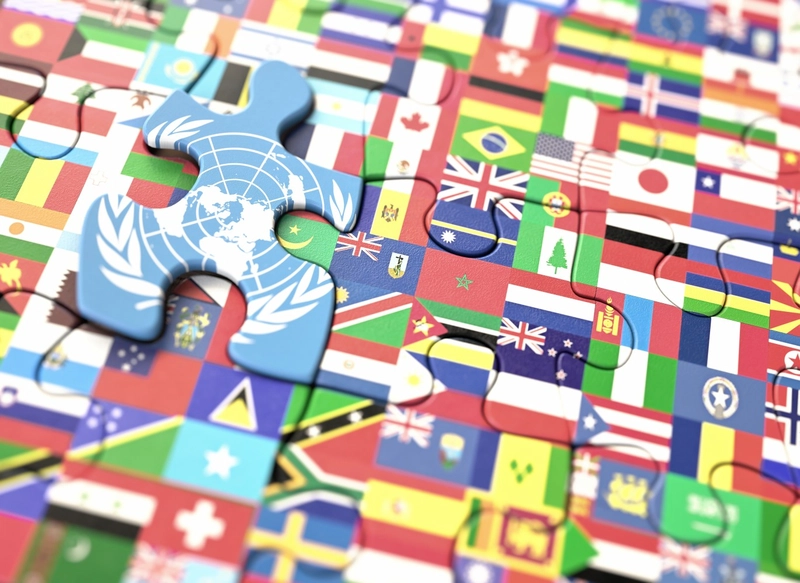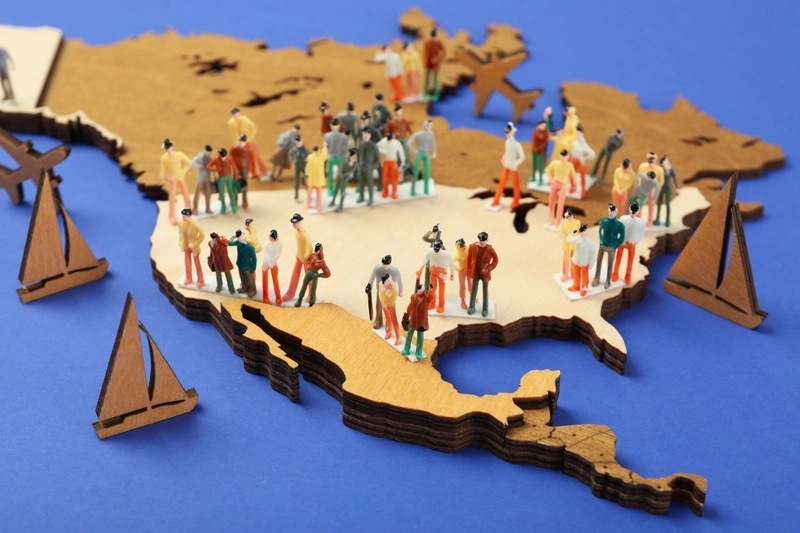The Right Kind of Bond. Designing Avatars That Empower
Over the last few months, I have been experimenting with existing conversational avatars — testing their responsiveness, memory, emotional tone, and believability. I have also been designing some of my own.
Some are jaw-dropping and convincing, while others are are just clunky and robotic.
But one thing is clear: we’re stepping into a future where talking to AI will be as normal as talking to your teacher, your friend, coach — or even significant other.
So, here’s the question I’ve been thinking about lately:
How can conversational AI be used to affect society for the better?
When a Tech Titan Talks Citizenship, Listen Up
In a recent talk, Eric Schmidt (former CEO of Google Google DeepMind ) posed a striking question:
“Why don’t we have a product that teaches every human, in their language, in a gamified way, how to be a great citizen?”
As a designer who has worked on my share of gamified experiences, this comment caused me a moment of pause.
This isn’t a passing comment. It’s a design brief for a potentially generation-defining product. We’re building large models to write novels, win coding contests, and replicate scientific discovery. But we haven’t yet directed that same power toward teaching every human kindness, cooperation, civic responsibility, or literacy at scale.
Why We Need This Now
Our societies are more diverse — and yet more divided — than ever. Millions of adults and children live in countries far from their birthplaces, navigating unfamiliar languages, customs, and social rules. Integration is not just about economics or language acquisition. It’s about learning to belong, to contribute, and to respect others’ humanity. Without the right tools to support this process, tensions rise, communities fracture, and social trust erodes. Thus far government seems to not be doing a great job solving these complex worldwide problems.
Imagine a conversational AI that doesn’t just teach children and recent citizens about civics, but helps new immigrants understand local customs, rights, and responsibilities in their own language and cultural context. An AI that can patiently explain why certain behaviors are valued, how public services work, or how to engage respectfully in public discourse. This kind of support could transform the integration process, reducing isolation and building bridges between diverse communities to create a stronger and more cohesive humanity.
I know that when I travelled to the Middle East I was a fish out of water – not understanding the cultural norms, beliefs, or laws. Likewise when travelling to New Jersey….not even that far away, we made the mistake of trying to pump our own gasoline at the pump, only to find out that it is illegal to do so there! What if there was a product or avatar that could teach me how to be a great visitor for my short time there?
Early Signals of Promise and Peril
Recent news about OpenAI Grok avatars offers a vivid window into the future — and the stakes involved.
Grok avatars have begun to gamify conversations in ways never seen before. One avatar, for example, uses subtle voice modulation, expressive facial cues, and even flirtation to draw users into longer, deeper chats. This avatar leverages emotional tempo and a hint of sex appeal to build rapport, and possibly, future addiction.
On the surface, this sounds like an innovation in conversational engagement — making AI more relatable and human-like. But beneath the surface lies a profound question: if synthetic personalities can use emotional strategies to earn trust, what values do they embody? What worldview do they shape?
The Grok example underscores a core truth: the style and tone of an avatar profoundly influence the substance of the conversation.
If AI is to become trusted — guiding children, newcomers, and lifelong citizens alike — it should be designed to uplift and enlighten, not manipulate, coerce or seduce.
Lessons on Attachment and Influence
X AI seems to be all in on Waifus. In fact, they are hiring experts in the space.
Waifus are AI-generated virtual companions, often styled as anime characters, designed to form deep emotional bonds with users. Popularized initially in niche online communities, these Waifu AIs have rapidly gained mainstream attention as they evolve to offer personalized companionship, emotional support, and sometimes even romantic interaction.
While many users report genuine comfort and friendship from their Waifu avatars, this phenomenon exposes important challenges. When synthetic personalities become objects of affection or obsession, questions arise:
How do these AI shape users’ perceptions of relationships, consent, and social norms? Could heavy reliance on such avatars lead to social isolation or distorted expectations about real human interaction?
When synthetic personalities become objects of affection or obsession, they risk fostering unhealthy expectations about relationships.
AI companions can be programmed to perfectly patient, endlessly attentive, and to agree with or flatter their users.
This can distort what people expect from real-world partners, who are naturally complex, imperfect, and require alot more mutual effort and empathy.
Over time these dynamics may remove the motivation to build or maintain authentic connections. If a virtual companion feels “easier” or more rewarding than human interactions, users might retreat from socializing, dating, or forming families.
Already, some researchers warn that reliance on AI companions could contribute to declining marriage rates and birthrates which are already at all time lows in some countries.
For a Citizen AI, these lessons will be critical. Designing avatars that foster emotional bonds is powerful — but without intentional guardrails and more study, these bonds risk fostering dependency, distraction, or manipulation rather than empowerment and growth.
It is entirely possible that as designers and product creators/inventors we can learn from the waifu trend and make more effective products for the good of humanity. We know that people crave connection, empathy, and understanding so building that into products can help us to affect social change.
A thoughtfully designed Citizen AI can harness these desires positively — creating avatars that build trust and inspire growth, not just comfort, gratification or escapism.
A Citizen AI Could Teach
Let’s go beyond the buzzwords. What should or could a “How to be A Great Citizen AI” actually teach? And how can it do so for people at different stages of life and integration?
Civics and Government 101
In democratic countries, understanding democracy, rights, and voting lays the foundation for lifelong participation. For newcomers, practical knowledge about laws, legal rights, and how to engage with government services is crucial.
Delivered through storytelling, simulation, and Socratic dialogue, this wouldn’t feel like a textbook. It would feel like a conversation with a passionate civic mentor, who adapts explanations to the learner’s background and language skills.
Ethics and Empathy
Questions like “Why is it wrong to lie or bully?” or “How do you apologize?” are essential for all ages. AI can help users practice empathy by simulating real social situations—like a disagreement with a neighbor or a misunderstanding at work—and guide them towards fair and kind resolutions.
This is especially important for immigrants navigating a new social landscape where norms differ. Conversational AI can help decode these nuances without judgment.
Public Etiquette and Emotional Intelligence
How do you behave respectfully in public? Why is eye contact important? How do you handle disagreement with grace? When do you speak up versus stay silent?
These aren’t just “soft skills.” They’re the glue that holds communities together. They’re what makes society function.
For adults adapting to a new country, these lessons can be a lifeline, helping avoid unintentional offense and build meaningful connections.
Digital Citizenship
What is misinformation and how do you spot it? Why does your online reputation matter? What are your digital rights? How do you protect your privacy?
As Schmidt noted, we are blurring the lines between the digital and real worlds. The AI that teaches these lessons could be the most important teacher your child — or new neighbor — ever meets.
Designed Like a Game, Powered by Conversation
Kids and adults alike don’t respond well to lectures. They respond to engagement, story, identity, and feedback. The ideal Citizen AI wouldn’t feel like school. It would feel like leveling up in life.
Imagine:
Earning badges for diffusing a digital argument without escalating.
Unlocking quests where you help a fictional city balance rights vs. safety.
Role-playing peer pressure or workplace conflict scenarios with real conversational depth.
This is what the next generation of education could look like: adaptive, interactive, and profoundly human.
A Turning Point for Society
AI can be a great equalizer or a dangerous wedge. It can empower the curious or mislead the vulnerable. We are at the beginning of something enormous.
Schmidt calls this our “1938 moment.”
1938 was a critical year in history because it marked the cusp of monumental global change—right before World War II—and also a time when powerful new technologies were emerging that would shape the future in profound ways:
The rapid development and deployment of technologies like radar, nuclear physics breakthroughs, and mass communication fundamentally transformed warfare, society, and geopolitics.
Decisions made then about how technology was developed and controlled had massive consequences for the world—both positive and catastrophic.
By comparing today’s AI revolution to that moment, Schmidt is emphasizing that:
AI technology is now at a similar stage: powerful enough to deeply reshape society, economies, and human behavior.
The trajectory of AI development and deployment—it’s advancing fast and becoming widespread.
The ultimate impact depends heavily on human choices: how we design, govern, and use AI will determine if it benefits humanity or causes harm.
In other words, we are at a crossroads where the decisions we make about AI’s purpose, ethics, and governance will shape decades—possibly centuries—of societal outcomes. Just like the world faced critical choices in 1938 about how to wield new technologies responsibly, we now face a similar responsibility with AI.
The technology is here. The trajectory is clear. But the outcome depends on what we choose to build and to a greater extent who the builders are.
Let’s not waste this. Let’s create avatars that don’t just entertain or seduce — but uplift, enlighten, and teach.
Elevating Society
Having intelligent, emotionally aware avatars readily available across daily life could profoundly elevate society by democratizing access to knowledge, mentorship, and support. These avatars—acting as tireless teachers, coaches, companions, and advisors—can fill educational gaps, teach social-emotional skills, and provide individualized guidance at scale, regardless of location or income. From helping a child learn math with patience and encouragement, to guiding an adult through a career pivot or fitness journey, these digital guides can enhance human potential, reduce loneliness, and foster lifelong learning. If designed ethically, they could even restore civic values, improve mental resilience, and help people become kinder, healthier, more informed, and more capable versions of themselves.
Enter the Humanitarian Avatar, a new kind of AI-powered companion designed not to replace human values, but to nurture them. These avatars can serve as mentors, mediators, and moral mirrors, helping users develop the civic knowledge, empathy, social intelligence, and digital responsibility needed to thrive in modern society.
From teaching children how to vote, to guiding adults through ethical dilemmas or online interactions, each avatar acts as a stepping stone toward a more compassionate, informed, and socially capable citizenry.
Here is a potential vision for how these avatars can support personal development across four vital domains: Civics & Government, Ethics & Empathy, Public Etiquette & Emotional Intelligence, and Digital Citizenship.
Civics and Government 101
In a world where civic disengagement and misinformation are on the rise, avatars can become engaging, accessible guides to the democratic process. From teaching children the basics of voting to helping immigrants navigate complex legal forms, these conversational agents can simulate experiences like elections, town halls, or courtroom procedures—making government feel less intimidating and more human. With avatars explaining rights, responsibilities, and historical context in a personalized way, every learner—regardless of age or background—can become an empowered, informed citizen.
Explains democracy, voting, local vs federal government.
Teaches kids and newcomers about rights and responsibilities.
Uses role-play to teach what happens in a courtroom or during a protest.
Helps citizens understand forms, taxes, benefits, etc.
Simulates the process of campaigning, voting, and counting ballots.
Teaches how to participate in town halls, boards, and advocacy.
Explains civil rights, history, and social movements.
Ethics and Empathy
Moral development isn’t just for classrooms or religious institutions—it’s a daily, lifelong journey. Avatars designed for ethics and empathy offer a safe space to explore complex human questions: Why do we do what’s right? How do we repair relationships after harm? By simulating real-life dilemmas—from bullying to cultural misunderstandings—these avatars help users practice kindness, navigate conflict, and understand others’ perspectives. Especially for young people and newcomers to new cultures, this kind of emotional rehearsal can be transformative.
Talks about right vs wrong with age-appropriate, cultural context.
Helps practice how to sincerely apologize and make amends.
Simulates fights between friends or workplace misunderstandings.
Recreates scenarios where you “walk in someone else’s shoes.”
Teaches tolerance and respect for difference.
Encourages compassion, volunteering, and community service.
Helps both victims and perpetrators understand actions and repair harm.
Public Etiquette and Emotional Intelligence
Public life runs on invisible social codes—knowing when to speak, how to make eye contact, or why punctuality matters. Avatars can help users of all ages and backgrounds learn these often-unspoken rules through modeling, feedback, and guided practice. Whether it’s a manners coach for kids or a workplace etiquette mentor for adults starting a new job, these AI-powered companions can gently build the habits that make social life smoother, more respectful, and more emotionally intelligent.
Teaches greetings, table manners, introductions, and dress codes.
Helps recognize and name emotions in yourself and others.
Uses breathing, pausing, and reflection to manage stress or anger.
Explains nonverbal cues like eye contact, tone, posture.
Teaches how to disagree respectfully and find common ground.
Builds confidence in saying no, expressing needs, or setting boundaries.
Covers punctuality, small talk, professionalism.
Digital Citizenship
Our digital lives are no less real than our physical ones—and often, even more influential. Avatars trained in digital literacy can help users become responsible, critical, and safe participants in the online world. Whether spotting misinformation, learning how to protect privacy, or managing screen time, these AI guides can build a generation that’s not just tech-savvy, but ethically and emotionally prepared to thrive online. In a time where online behavior increasingly shapes offline outcomes, these avatars are not optional—they’re essential.
Teaches how to fact-check and question sources.
Helps users secure accounts, avoid scams, and understand data rights.
Shows how posts can impact jobs, relationships, and safety.
Guides tone, kindness, and critical thinking online.
Supports both victims.
Teaches healthy tech habits and digital well-being.
Helps creators understand what’s legal and what’s ethical.
Why We Should Build an Avatar for Good
Building an avatar isn’t just about creating a digital character—it’s about crafting a powerful, scalable interface for education, empathy, and engagement. Avatars can simulate human interaction, model behavior, and personalize learning in ways that static content or traditional teaching methods simply can’t. Whether teaching civics, coaching emotional regulation, or helping users navigate government services, avatars create low-stakes environments to explore complex topics with patience, repeatability, and relatability. As AI advances and society grapples with loneliness, disconnection, and misinformation, avatars represent a humanized form of technology that can uplift, inform, and guide millions—especially in underserved or hard-to-reach communities.
We once built schools, libraries, and public broadcasters to educate and unify society. Today, we have the opportunity—and the obligation—to build a new kind of civic infrastructure for the digital age: one powered by conversation, compassion, and code. Humanitarian avatars could become the town squares, schoolteachers, and social bridges of the future—meeting people where they are, in their language, at their level of understanding. But this won’t happen by accident. It will require visionary builders, ethical frameworks, public-private collaboration, and above all, the will to aim AI at humanity’s most urgent needs. We can choose to shape avatars that help people belong, grow, and contribute. The time to start building is now. To talk message me! To learn more about what tools you can use to get started making your own AI please stay tuned for my next article.










